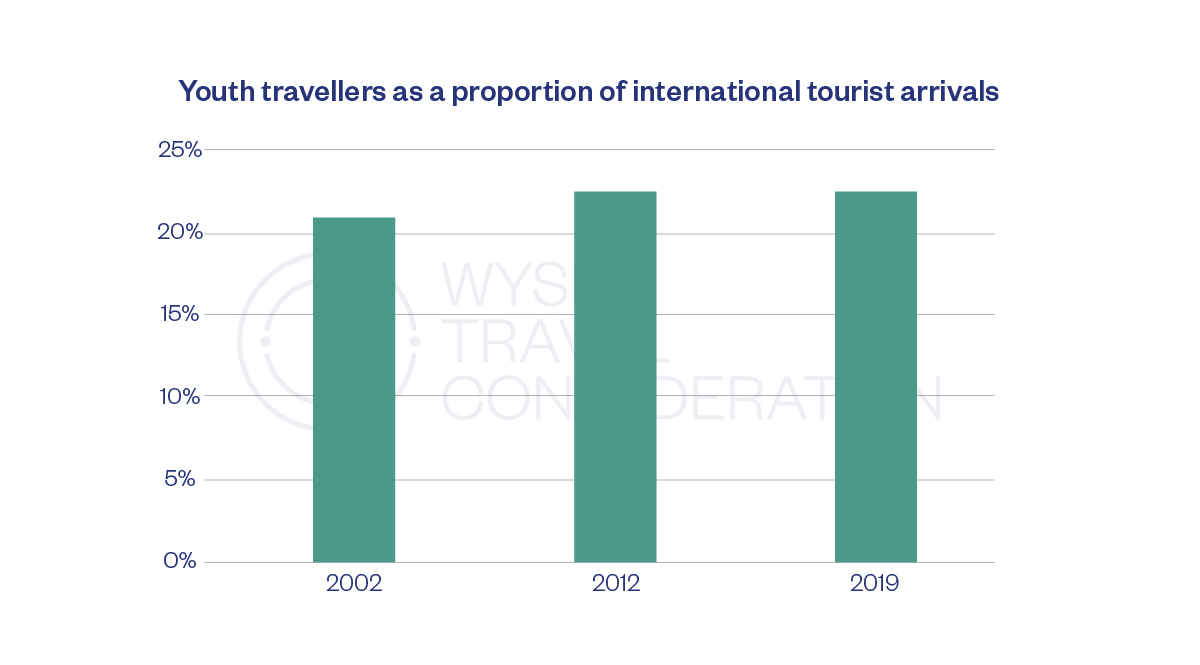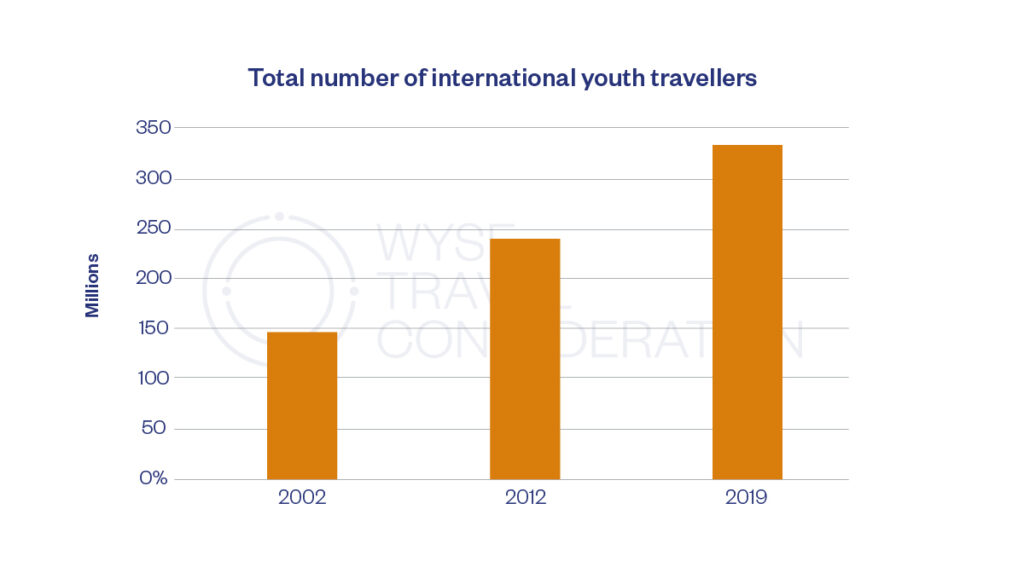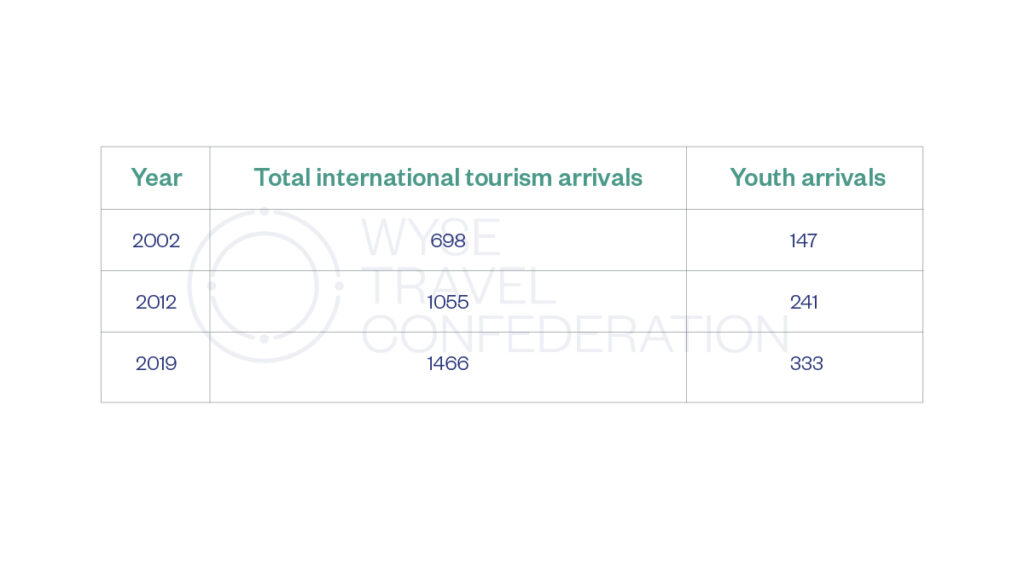In 2002, the proportion of international arrivals aged between 15 and 29 was estimated to be 21%, and this increased to 23% in 2012. The most recent calculations indicate that the youth share of international travel has remained stable at 23% of international arrivals in 2019.
These figures confirm a significant growth in the total volume of international youth travel, up from just under 150 million in 2002 to over 330 million in 2019, an increase of over 126%. This growth has been largely driven by increased travel participation and travel frequency by young people, and the expansion of new travel markets in emerging economies, particularly in Asia and Latin America. Data from WYSE Travel Confederation’s New Horizons survey of international youth travellers shows a growing frequency of international trips, up from an average of 1.7 long trips (more than 7 nights) in 2007 to over 2 long trips a year in 2017 (a growth of over 20% in a decade).
Spend has also increased in the youth travel market over the same time period. Estimated youth travel expenditure reached a record 295 billion euros (USD 333 billion) in 2019. This is considerably higher than the estimated spend of 114 billion euros (USD136 billion) in 2005.
Historical analyses from major destinations confirm the continued importance of youth tourism. In India, for example, the proportion of inbound youth travellers has hovered around 27% since 2001.
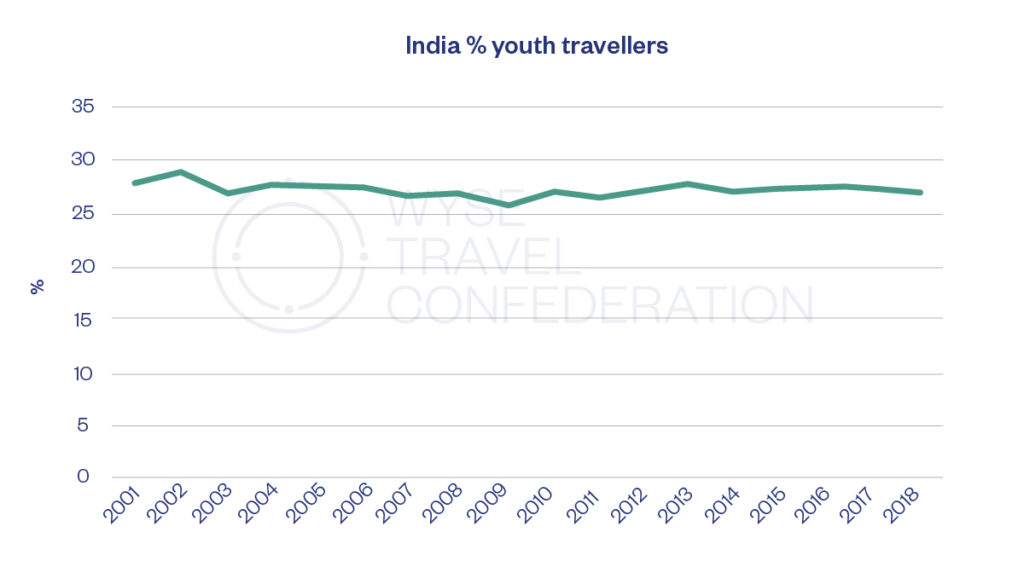
Data from Sri Lanka show a more variable picture, but with a clear trend towards a growing proportion of youth travellers in the pre-Covid period.
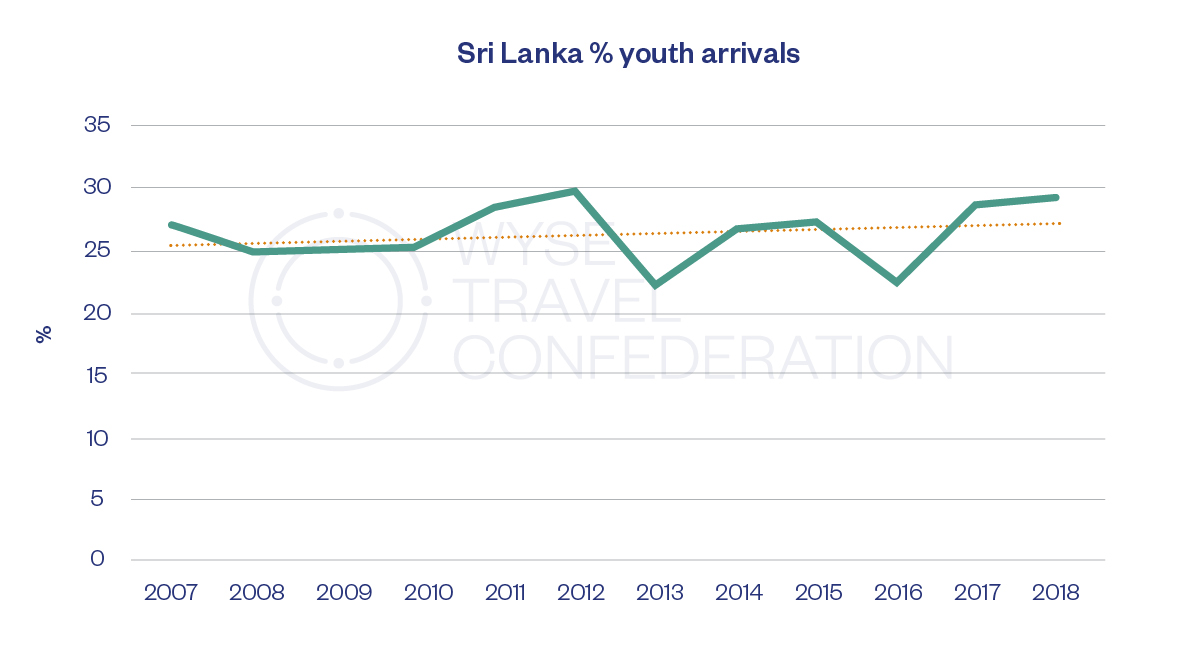
Recent longitudinal data from Spain and Israel also confirm the general stability of youth traveller percentages in inbound tourism.
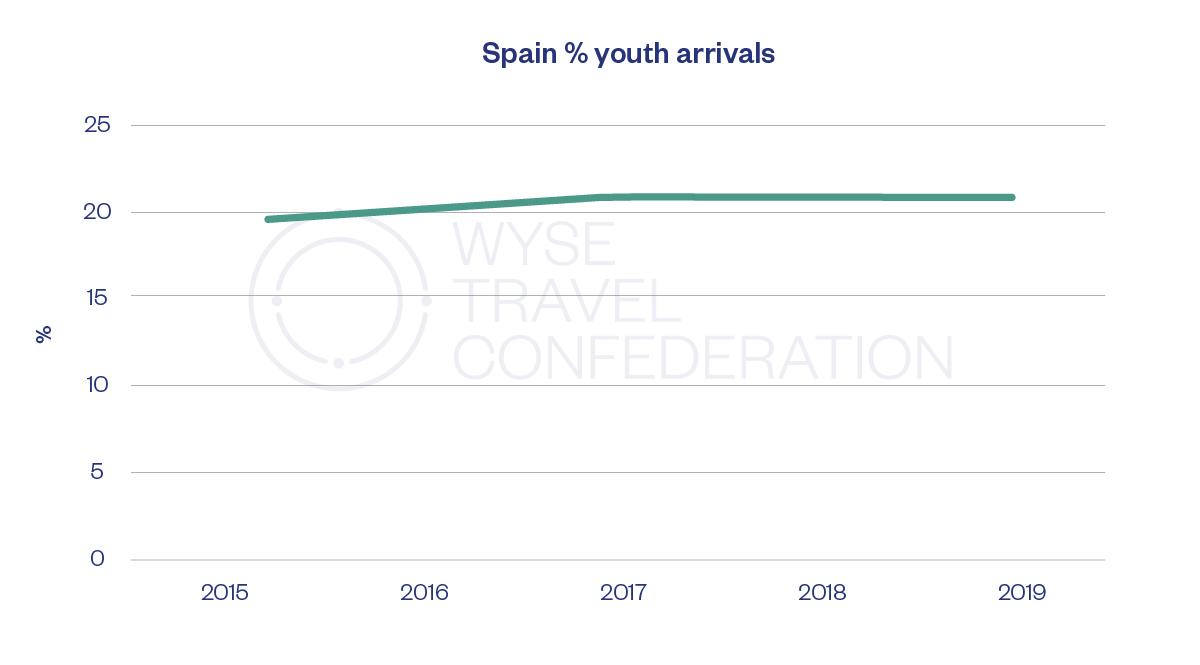
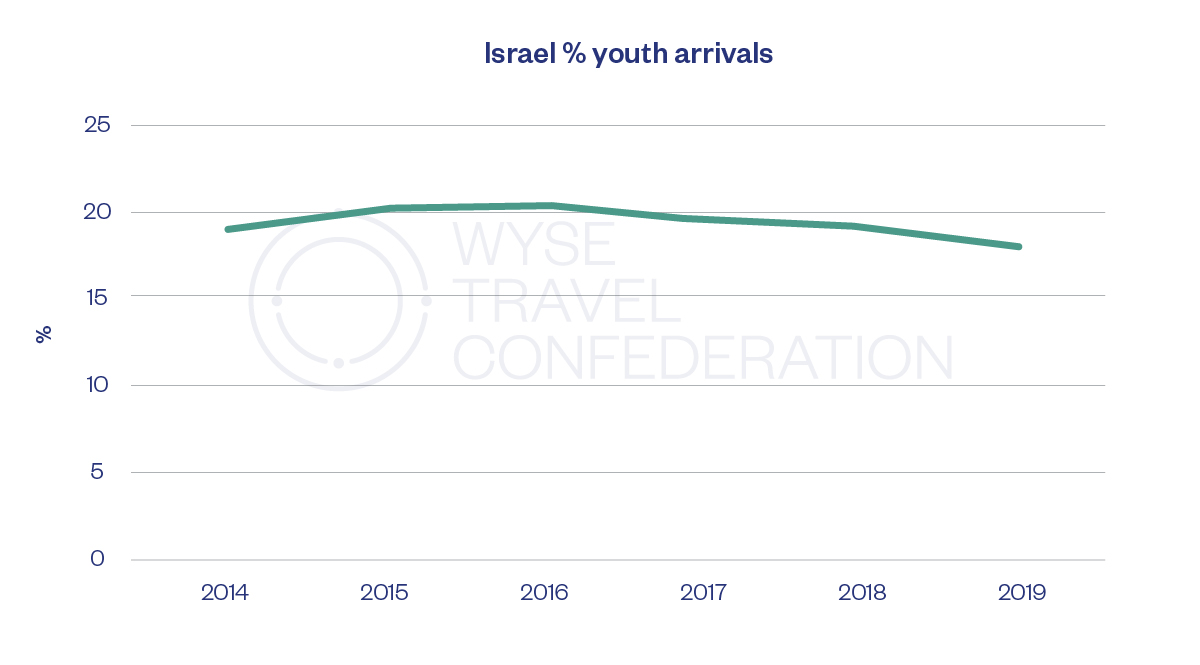
The overall indications are that the global youth travel market makes a consistently significant contribution to international travel. Looking forward, the expectations are that this contribution will continue in future. The number of young people aged 15 to24 is expected to continue growing to over 1.3 billion until 2040. There will be a big jump in the proportion of global youth in the next decade, although growth rates will flatten off after 2030.
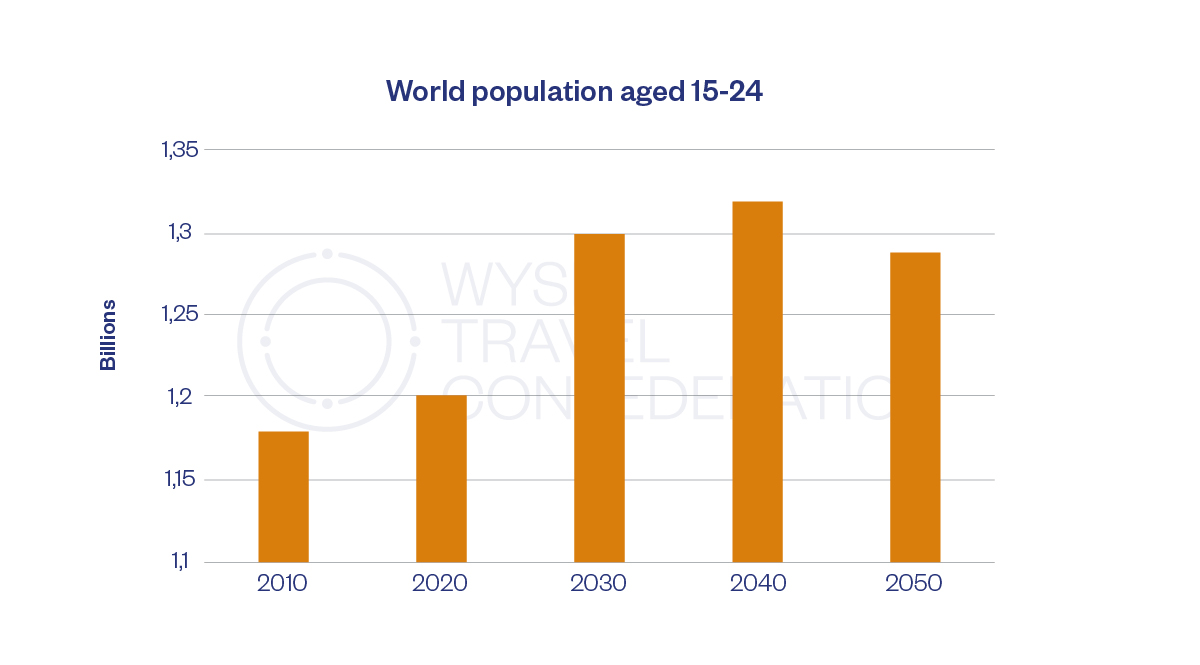
The proportion of young people in the developed economies will decline, while the emerging economies will increase their share. This will tend to strengthen the trend towards an increased share of global youth travel being generated by the emerging economies.
Background
WYSE Travel Confederation has been working on calculating the size of the global youth travel market since 2003 as part of the New Horizons research programme.
In 2005 WYSE Travel Confederation collaborated with the United Nations World Tourism Organisation (UNWTO) to develop a sound statistical basis for estimating the size of the youth travel market. Surveys undertaken by National Tourism Organisations and their research partners in 33 countries were used to estimate the proportion of international arrivals aged 15 to29. This initial estimate indicated that youth travel accounted for around 21% of global travel (Youth Travel Matters: Understanding the Global Phenomenon of Youth Travel, 2008).
A revised estimate using the same methodology based on data for international arrivals in indicated that 22.8% of international arrivals were youth travellers. The analysis of 2012 international arrivals also indicated that the proportion of youth travellers was higher in emerging nations (23.3%) than in the developed economies (22.8%).
The current report is based on updated information on tourist arrivals for 59 countries, including the European Union, the United States and China. These data covered 42% of global arrivals in 2019, a similar level to the 43% of international arrivals covered by the 2002 data.
